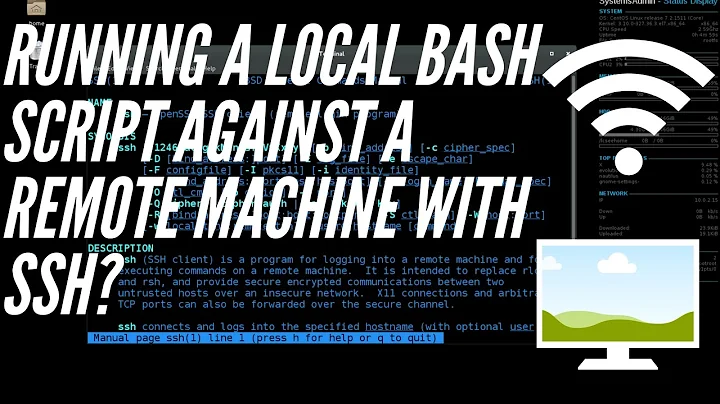how to run a local script in remote server using expect and bash script
Try something like this:
#!/usr/bin/expect
spawn ssh usert@server
expect "user@server's password:" {send "$password\r"}
expect "$ " {send "hostname\n"}
expect "$ " {send "ls -alrth\n"}
expect "$ " {send "exit\n"}
Not sure if it is the most efficient way of doing it, but it seems to work in my test. (spaces after $)
Also, you can put this at the top of your script "exp_internal 1".
This will aid in the debugging process!
Related videos on Youtube
user1760929
Updated on September 18, 2022Comments
-
 user1760929 over 1 year
user1760929 over 1 yearI want to make a script that will connect to a server and do some CRUD operation on the server and again return to local. I do not want to upload the script to server..
I have made a script that will help to connect to the server but I am not able to do any any operation through the help of the script.
please make my doubt clear regarding the fact that weather its possible to run a local script (as in my case ) in the remote server.
If yes how please specify the script also for which I will be grateful to you .
till now my script is
#!/usr/bin/expect set ip neviss set user user set password 1234 spawn ssh "$user\@$ip" expect "Password:" send "$password\r"; interact ( after this line any command is not getting executed) ls -lrt -
 user1760929 over 11 yearsmany many thanks sir for answering my query.but can you just explain more like how does it work and what i need to right at the expect "#" {send "hostname\n"} i mean hostname . please reply i am in middle of a problem .please help .
user1760929 over 11 yearsmany many thanks sir for answering my query.but can you just explain more like how does it work and what i need to right at the expect "#" {send "hostname\n"} i mean hostname . please reply i am in middle of a problem .please help . -
 user1760929 over 11 yearsI tried in the above process its not working for me ...please help ....
user1760929 over 11 yearsI tried in the above process its not working for me ...please help .... -
bourne over 11 yearsHey sorry for late response. From what I understand you are basically trying to tell the script what to 'expect' after issuing each command. So for instance after sending the password, you would be at a normal command prompt. Now where you might be having a tough time right now is at the pound "#" sign. If you are using root then use the pound "#" sign. If you are using a regular user then use the dollar "$" sign. Regular users use the "$" sign on their command prompt. I will modify the script above
-
bourne over 11 yearsWeird. I tested this myself just now and it doesn't seem to work as a regular user. If you do it as root it works as expected. I will keep playing with it.
-
bourne over 11 yearsOkay sorry I figured it out. Something stupid. Add a space after the "$".. "$ ". I also found something else very useful.. will add above
-
 user1760929 over 11 yearsThanks sir for everything but still my requirement is not fulfilled .plz help !!!
user1760929 over 11 yearsThanks sir for everything but still my requirement is not fulfilled .plz help !!!




